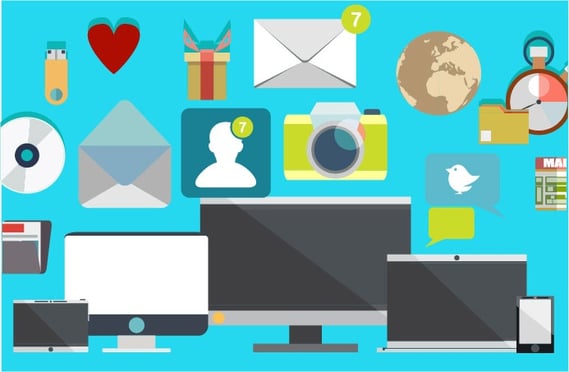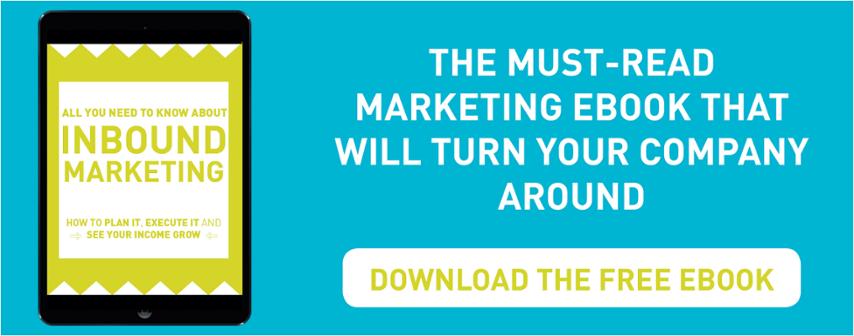How to Improve your Customer Satisfaction and Turn Them Into Promoters


Customer retention plays a big role in a business' success. Having happy customers means having repeat business and promoters of your company that might refer you to new potential clients, and get that word-of-mouth going. As HubSpot, the inbound marketing software leader, says, 'While happy customers can help to spread the word of why they enjoy doing business with you, they can also have a significant impact on your revenue'.
Therefore, keeping your customers happy is just as important as generating new business leads, but it's one that is often overlooked. We are all so obsessed with finding new customers all the time, nurturing the relationships with prospects, that we sometimes forget about nurturing the relationships with those that are already working with us. That is why your business should have a marketing plan and budget for 'new business from old customers', and you should start treating your client base as leads and prospects.
The Huffington Post defines customer service as 'the most proactive tool any business owner can plan to use as part of a marketing, advertising, or revenue-increasing plan.'
In fact, according to the White House Office of Consumer Affairs, as reported by Return on Behavior magazine:
- The probability of selling to a new customer is 5-20 percent, while selling to an existing customer is 60-70 percent.
- Negative interactions with a business are spread to twice as many people as positive ones.
- 78 percent of consumers have ended a transaction due to bad service.
- Only 4 percent of dissatisfied customers actually speak up.
- It takes 12 positive experiences to make up for a single bad experience.
- It costs over six times more to get new customers than it does to keep one current one.
If you start considering customers as more than just a sale, but you introduce the possibility of them coming back time and time again, that will increase their lifetime value to you. For instance, if you can work out that the average customer makes a annual purchase of £10k and you manage to get them to stay with your company for around 3 consecutive years (instead of 1), their lifetime value to you will be £30k. If you can get the relationship going for more than one year, then, that is effectively £20k in new business.
Here are some ideas on how to keep your customers satisfied and turn them into promoters.
Exceed their expectations
Exceeding expectations means doing something extra that the client doesn't expect. This doesn't mean over delivering, so if you promise to deliver 1,000 pieces you deliver 1,200 instead, as that is not a sustainable growth model, but doing a small gesture, such as giving extra advice/tips/information on how to use the product or take the service further, or simply sending them a hand-written card. Something that will put a smile of the face of the client and makes them remember you.
Continue educating them
Even if a contact hasn't bought anything from you in a while, it's always good to keep in touch with them in a "non-salesy" way, and sending them relevant content and articles they might find interesting is a great way to do that.
However, I realise that is very hard to keep in touch with everyone individually, selecting the right content for each one of them and sending them regular emails. So the best way to do it is by segmenting your list of customers, exactly in the same way you do for your prospects, based on their personas and their interests. Then set up a few different workflows about different topics, and enroll the right segments to the right workflow, so that your customer receives only the articles that might interest them, and the emails also feel a lot more personal and tailored to them, their needs and their pain points.
Use smart content
Rather than trying to strike a balance with your content to appeal to everyone in your database, you can use smart content to ensure that the content on your website serves the needs of both new visitors and returning customers. Smart content is essentially content that is intelligently personalised to your customers' needs, and it changes based on who visits your website. So, for instance, if it is a supplier, the calls-to-action and information they will find will be different than if they were a customer visiting your website.
According to HubSpot, data shows that personalised content drastically improves the performance of your website and the engagement of your visitors.
Consider tailoring your homepage copy to your returning customers by:
- Providing only the information that customer is interested in, based on who they are, where they live and what their interests are. Again, this is all based on the segmentation of your customers based on their specific personas.
- Offering them exclusive features/content offers/products.
- Giving them a special incentive or discount that is for customers only.
- Using personalised tokens for your customers, such as greeting them by their first name when they return to your website and personalising their experience.
If you want to have a look at what smart content looks like, have a look at this page on the HubSpot blog where there is an example.
Use surveys and the Net Promoter Score
What best way to know if a customer is happy than to ask them?
Trigger specific customer surveys at targeted customer touch-points and after key customer events, such as point of sale or just after the customer has engaged with your website, called your customer service or visited your store. The more focused and event-driven your surveys, the better your market feedback will be.
If you don't want to do something long or complex, there is a powerful market research methodology that might work for you. The Net Promoter Score (NPS) can be simply calculated from the answers to "one deceptively simple question" – would you recommend this product? The number of people who will do this minus the ones who won’t, gives you the Net Promoter Score for your company, as Quest Back explains.
The score is generally broken down like this:
9 to 10 = promoters: Customers who like your brand and service and will most likely choose it again.
7 to 8 = passives: Consumers who are satisfied with what you provide but not overly enthusiastic.
0 to 6 = detractors: Consumers who had a poor or substandard experience with your product and who are unlikely to use it again or recommend it to their friends.
Deliver great customer service
Whatever clever things you may want to do in terms of marketing, they will be for nothing unless you provide a great service and give the customers the right assistance when they need it. Ultimately, clients want to see results and they want to get what they need and when they need it.
Customer service is not only down to your account managers or customer service team. Delighting customers is everyone's responsibility, from the receptionist who answers the phone to the engineer or the employee who will deliver the work.
Providing a high quality, consistent service leads to good customer experience and increases the likelihood that your product will be recommended to others. Never underestimate the power of consistency to generate loyalty and referral from your customers. "Get this right and your satisfied promoters will be legion", as Quest Bank states.
Conclusion
The goal of your business is not only to have lots of customers, but to have lots of promoters. Acknowledging that they can be a really powerful resource is the first step to success, and having a plan is the second, which is all based on really understanding your customers' needs and helping them solve them in the best way possible.
More from Sales Enablement

9 Genius Business Growth Strategies for B2B
When you talk about growth strategies, more often than not people assume you are talking about B2C. In fact, it’s somewhat rare...
What is Inbound Marketing?
Since 2006, inbound marketing has been the most effective method for doing business online. According to the State of Inbound...







